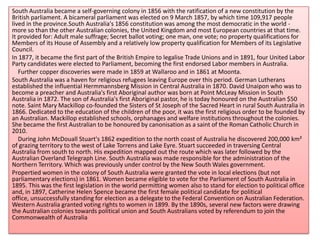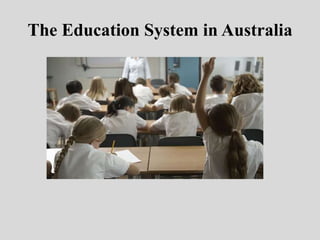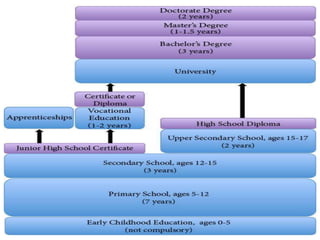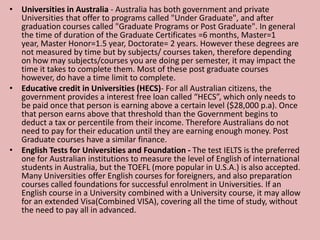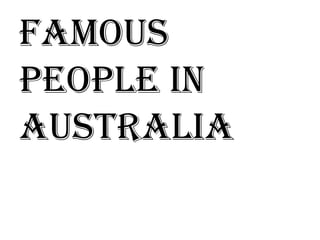Aboriginal Australians arrived on the Australian mainland between 40,000-60,000 years ago. The first known European landing was by Dutch navigator Willem Janszoon in 1606. Britain established a penal colony in New South Wales in 1788. Over the following century, British colonists established other colonies and explored the interior, bringing disease and conflict with Indigenous groups. Australia federated as a nation in 1901, and its population grew significantly in the 20th century through immigration and economic development.
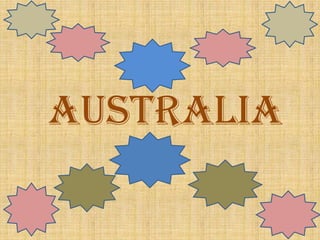

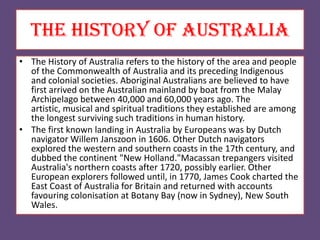






![Australian National Anthem
Advance Australia Fair was one of many Australian nationalistic songs written in the late-nineteenth
century as debates about the creation of the new nation were taking place in the different colonies.
Although it is thought to have been first performed in 1878 by Mr Andrew Fairfax in Sydney, possibly
the most significant early performance of Advance Australia Fair was at the inauguration of the
Commonwealth of Australia in 1901, where it was sung by a choir of 10,000. Advance Australia Fair was
not considered the national anthem, however, with this role going to the British anthem God Save the
Queen [or King] for most of the twentieth century.
A determined search for a truly Australian national anthem did not begin in earnest until the
Melbourne Olympic Games in 1956. The Australian Bureau of Statistics conducted a national opinion
poll of 60,000 people in 1974 and in 1977 the Australian Electoral Office ran a poll for a tune for a
national song in conjunction with a referendum.
In the 1977 plebiscite, four songs were in contention for the official title:
Advance Australia Fair
God save the Queen [or King] (the British anthem)
Waltzing Matilda (one of Australia's best-known national songs), and
Song of Australia (a popular national song written in 1859)
The results of the plebiscite were conclusive with 43.2 per cent (or 2,940,854 votes) going to Advance
Australia Fair. Next most popular was Waltzing Matilda with 28.3 per cent, despite its arguable status as
the best-known, best-loved and most iconic national song. In 1984 the government announced that the
tune of Advance Australia Fair together with modifications to two verses of the lyrics would become
the Australian National Anthem.](https://image.slidesharecdn.com/australia-130516094546-phpapp02/85/Australia-10-320.jpg)


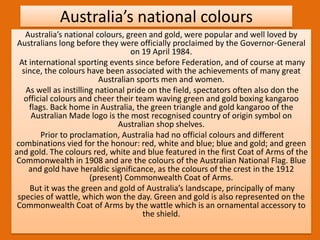





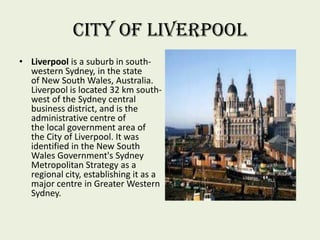
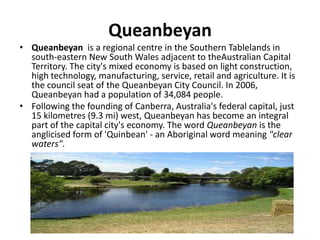



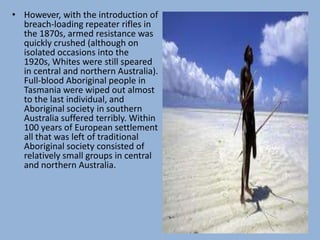



![Establishing a colonyIn 1895 women in South Australia were among the first in the world to attain the vote and were the first to be
able to stand for parliament.
Copper was discovered near Kapunda in 1842. In 1845 even larger deposits of copper were discovered at Burra
which brought wealth to the Adelaide shopkeepers who invested in the mine. John Ridley invented a reaping
machine in 1843 which changed farming methods throughout South Australia and the nation at large. By 1843,
93 km² of land was growing wheat (compared to 0.08 km² in 1838). Toward the end of the century South
Australia would become known as the "granary of Australia".
Gold discoveries in Victoria in 1851 brought a severe labour shortage in Adelaide which was created by the
exodus of workers leaving to seek their fortunes on the goldfields. However, this also created high demand for
South Australian wheat. The situation improved when prospectors returned with their gold finds
During the 1850s over 5400 hard working Germans settled in South Australia many started off the wine
industry in the Barossa Valley and they opened the first Luthern church in Hahndorf.
South Australians were keen to establish trade links with Victoria and New South Wales, but overland
transport was too slow. A £4,000 prize was offered in 1850 by the South Australian government for the first
two people to navigate the River Murray in an iron steamboat as far as its junction with the Darling River. In
1853 William Randell of Mannum and Francis Cadell of Adelaide, unintentionally making the attempt at the
same time, raced each other to Swan Hill with Cadell coming in first.
By the mid 19th century, there was a strong desire for representative and responsible government in the
colonies of Australia. In 1840, the Adelaide City Council was established as the first city council in the
Australian colonies. The Australian Colonies Government Act [1850] was a landmark development which
granted representative constitutions to New South Wales, Victoria, South Australia and Tasmania and the
colonies enthusiastically set about writing constitutions which produced democratically progressive
parliaments with the British monarch as the symbolic head of state. In 1850 and elections for legislative
councils were held in the colonies of Victoria, South Australia and Tasmania.
In 1855, limited self-government was granted by London to New South Wales, Victoria, South Australia and
Tasmania. An innovative secret ballot was introduced in Victoria, Tasmania and South Australia in 1856, in
which the government supplied voting paper containing the names of candidates and voters could select in
private. This system was adopted around the world, becoming known as the "Australian Ballot". 1855 also saw
the granting of the right to vote to all male British subjects 21 years or over in South Australia.](https://image.slidesharecdn.com/australia-130516094546-phpapp02/85/Australia-28-320.jpg)

